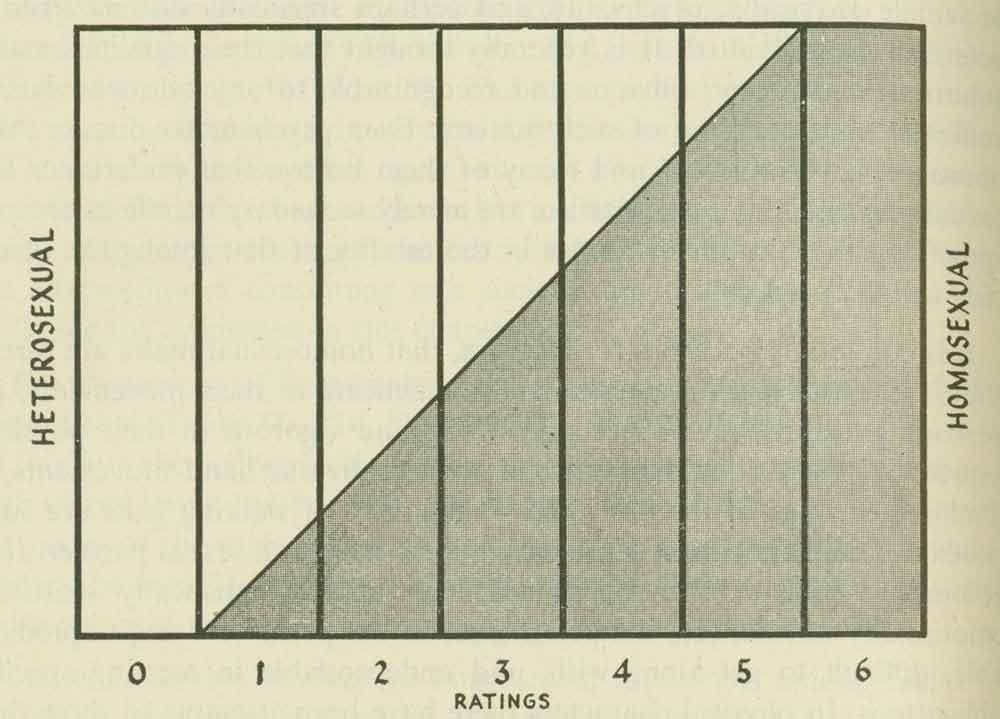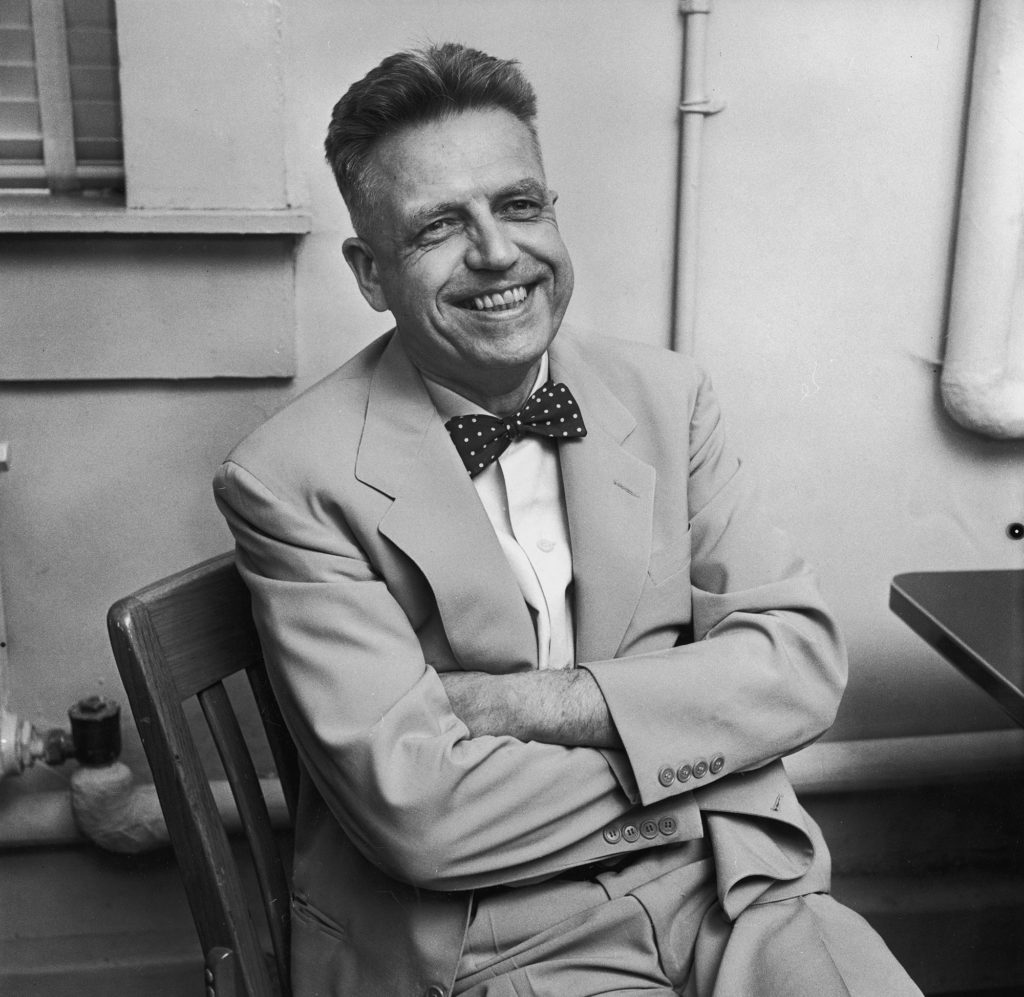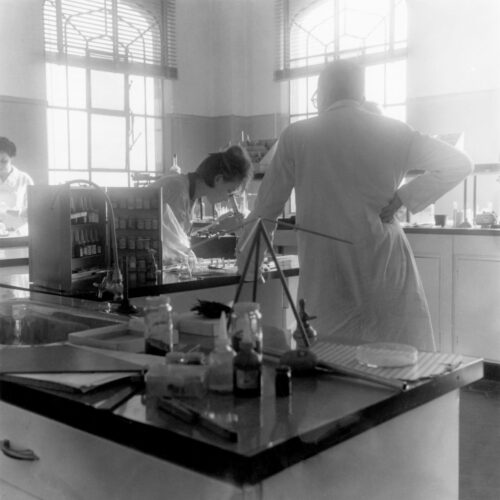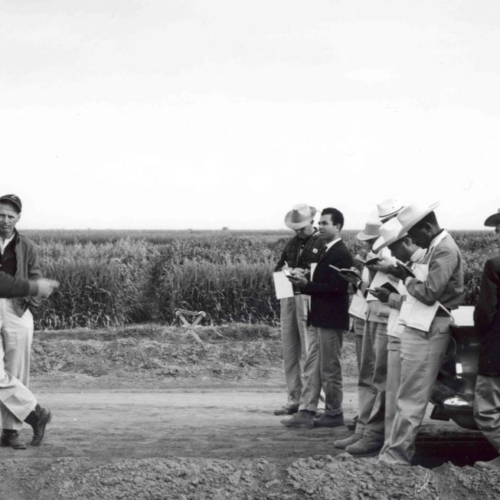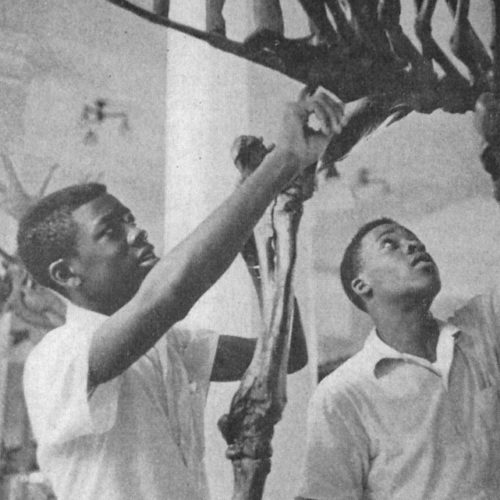It has been over seventy years since Alfred Kinsey published research findings asserting that people do not fit exclusively into binary sexual categories. What exists today as the well-known Kinsey scale was at mid-century a revolution in scientific understanding of human sexuality. Moreover, it has been a source of heated controversy ever since. The most well-known of the study’s conclusions asserts that only ten percent of the human population is fully heterosexual, and likewise only ten percent is exclusively homosexual. The rest of the population is spread across a “continuum” at points somewhere in between. This assertion transformed American society by challenging American attitudes toward sexual normalcy.Alfred C. Kinsey, Wardell R. Pomeroy, and Clyde E. Martin, Sexual Behavior in the Human Male. (Philadelphia: Saunders, 1948).
But there is a much less well-known story about Kinsey and his research enterprise: that the Rockefeller Foundation (RF) funded much of his work. Why and how did a large foundation get involved in human sexuality research — and what was this funding relationship like, especially as the controversy heated up?
Funding Research on the “Problems of Sex”
Alfred Kinsey was a Harvard-trained entomologist studying wasp genetics at Indiana University when, in the late 1930s, he agreed to teach a course on marriage and reproduction.Theodore M. Brown and Elizabeth Fee, “Alfred C. Kinsey: A Pioneer of Sex Research.” American Journal of Public Health. 2003 June; 93(6): 896-897.The course piqued his interest and marked a pivotal moment in his career, as he quickly shifted focus from insects to humans.
Meanwhile, the Rockefeller Foundation was supporting the National Research Council’s (NRC) Committee for Research in the Problems of Sex. Established in 1922, the NRC Committee originally operated with funding from another Rockefeller-created agency, the Bureau of Social Hygiene. But when the Bureau ceased operations in 1933, the NRC Committee continued to fund projects with direct support from the RF.
In 1941, the NRC Committee took notice of Kinsey’s research.
Prior to their support of Kinsey, NRC Committee members had typically been conservative in their funding decisions, opting to support studies of animal rather than human sexuality. Their decision to support Kinsey was a radical shift, which RF staff and leaders ultimately stood behind for years.
Taking a Gamble on a New Field
Kinsey’s first NRC grant in 1941 amounted to $1,600. By 1947, Kinsey’s project was allotted $40,000 annually in NRC funding, which in turn came entirely from the Rockefeller Foundation. A testament to the priority placed on Kinsey’s work, fully half of all annual RF contributions to the NRC Committee went to his sex research.The funding history is summarized in a January 10, 1949 letter. “Excerpt from letter of chairman to director of Division of Medical Sciences, Rockefeller Foundation, through Division of Medical Sciences, National Research Council,” Rockefeller Foundation records, Projects, RG 1.1, Series 200, Rockefeller Archive Center.
Foundation Staff Take Notice of Kinsey
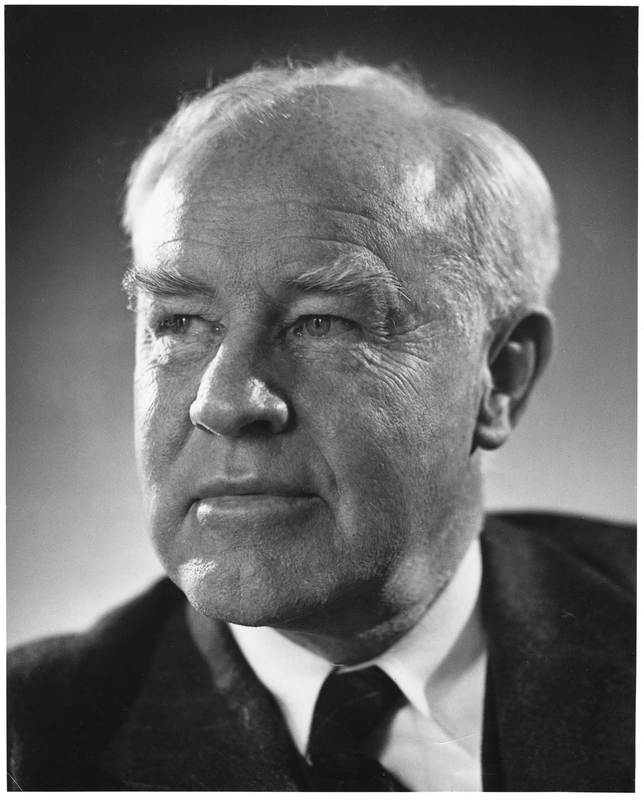
The Foundation funds made it to Kinsey through the intermediary of NRC expertise and testimony, but very soon, RF staff members themselves began to pay attention. Medical Sciences Director Alan Gregg met with Kinsey in 1943, and described the zoologist as “attractive in manner and impressive in his account of his work.” Gregg viewed Kinsey’s research program as “quite extraordinary.” Excerpt from Officer’s Diary, “Alan Gregg,” September 3, 1943, Rockefeller Foundation records, RG 12, F-L Rockefeller Archive Center.
The following year, when Kinsey worried that the RF might be trying to distance itself publicly from sex research, Gregg assured him that “neither I personally nor this Division of the Foundation nor the Foundation as a whole wishes to have or has thought of any repudiation of your work.”Letter from Alan Gregg to Alfred C. Kinsey, “National Research Council – Sex Research – Kinsey,” September 8, 1944, Rockefeller Foundation records, Projects, RG 1.1, Series 200, Rockefeller Archive Center.
Alfred C. Kinsey [is] attractive in manner and impressive in his account of his work.
Alan Gregg, 1943
By 1944, however, Kinsey was encountering logistical problems due to wartime rationing and the difficulty of obtaining draft deferments for graduate researchers. But there were far graver risks, given the work’s taboo topic.
“We have been arrested, investigated by sheriffs, and repeatedly stood up by the police” Kinsey wrote in a letter to Gregg.Alfred C. Kinsey to Alan Gregg, “National Research Council – Sex Research – Kinsey,” August 26, 1944, Rockefeller Foundation records, Projects, RG 1.1, Series 200, Rockefeller Archive Center.But Gregg’s support for the work was unwavering, and two years later, Kinsey formally thanked Gregg for “the personal interest that you have taken in this work and the intelligent understanding you have had of the problems which we have faced.”Alfred C. Kinsey to Alan Gregg, “National Research Council – Sex Research – Kinsey,” April 16, 1946. Rockefeller Foundation records, Projects, RG 1.1, Series 200, Rockefeller Archive Center.
The relationship between Kinsey and Gregg was so strong that in 1947 Gregg agreed to write an introduction to Kinsey’s forthcoming publication under his own name, independent of his role at the RF.
Promising Research on Non-Binary Sexuality
Added to Gregg’s optimism were professional reports he heard about Kinsey, which emerged from experts in many disciplinary quarters. In March 1945, for example, Gregg noted in his officer’s diary that “psychoanalysts think Kinsey’s work will advance the status of psychoanalysis by 50 years.”Diary entry attachment to letter from Alan Gregg to Alfred C. Kinsey, March 7, 1945, Rockefeller Foundation records, Projects, RG 1.1, Series 200, Rockefeller Archive Center.
Medical researcher George W. Corner of the NRC Committee also wrote with praise for Kinsey’s methodology. Responding to concerns about the approach used in the research, Corner wrote in 1946 that he was “convinced that in research on sex behavior, personal interviews conducted with great skill and with all the precautions Dr. Kinsey has learned by experience will elicit information that is correct and comprehensive to a degree impossible by any other means.”“Memorandum by George W. Corner,” January 24, 1946. Rockefeller Foundation records, Projects, RG 1.1, Series 200, Rockefeller Archive Center.
Among the NRC Committee itself, the mood was hopeful and confident. Robert M. Yerkes, the chairman of the Committee for Research in Problems of Sex, wrote to a colleague in 1946: “Beyond doubt Alfred Kinsey is an extraordinarily gifted interviewer. He has rare tact, sympathetic insight, ability to win confidence, disinterestedness, objectivity, and directness.” He concluded his letter with the bold assertion that “Alfred Kinsey is in the midst of an epoch-making socio-biological inquiry.” Letter from Robert M. Yerkes to Lewis H. Weed, January 24, 1946. Rockefeller Foundation records, Projects, RG 1.1, Series 200, Rockefeller Archive Center.
Amidst this atmosphere of good faith, RF funding was especially secure with Alan Gregg as the project’s internal champion. The grants helped fund a team of assistants who conducted, collected, and analyzed thousands of interviews with men and women meant to represent a social and economic cross-section of America. The only limiting factor, according to Gregg and Kinsey alike, was the amount of time it took to train new interviewers and analysts.
Nevertheless, Kinsey was conscious that RF leadership yearned to see results sooner rather than later. He wrote to Gregg in 1946: “I think our productiveness in the next three years will please the trustees. I am glad that your trustees now know as much about the research as you have described to them.”“National Research Council – Sex Research – Kinsey,” Rockefeller Foundation records, Projects, RG 1.1, Series 200, Rockefeller Archive Center.
Alfred Kinsey is in the midst of an epoch-making socio-biological inquiry.
Robert M. Yerkes, 1946
The Kinsey Team’s Interviews
Kinsey used thousands of interviews to build a set of case histories that provided statistical data from which to draw more generalized conclusions about the sexual experiences of Americans.
Even today, descriptions of Kinsey’s work tend to dwell on his interview techniques. NRC Committee member Corner volunteered as an interview subject in 1946, in order to familiarize himself further with the project. In a memorandum following the interview, Corner remarked:
“These experiences made me quite confident that Dr. Kinsey is able by his methods of questioning, to elicit frank, full and complete histories of sex conduct. The expertness of the questioning becomes even more apparent on thinking it over afterward. In the first place, the subject is made to feel that Dr. Kinsey is disinterested and sympathetic at the same time. It is disarming to be asked innocuous questions first – what work, for example, one’s father did, and where did one live in childhood. The intimate questions slip in sideways and by degrees. When at last the subject realizes that he is speaking of things he perhaps never put into words before, he is relieved to find that his questioner evinces neither surprise, amusement, nor condemnation.”“Memorandum by George W. Corner,” (January 24, 1946), Rockefeller Foundation records, Record Group 1.1, Series 200, Rockefeller Archive Center.
Publication at Last
The product of the research, Sexual Behavior in the Human Male, was published in 1948. It reached academic and popular audiences alike, inspiring both praise and condemnation.
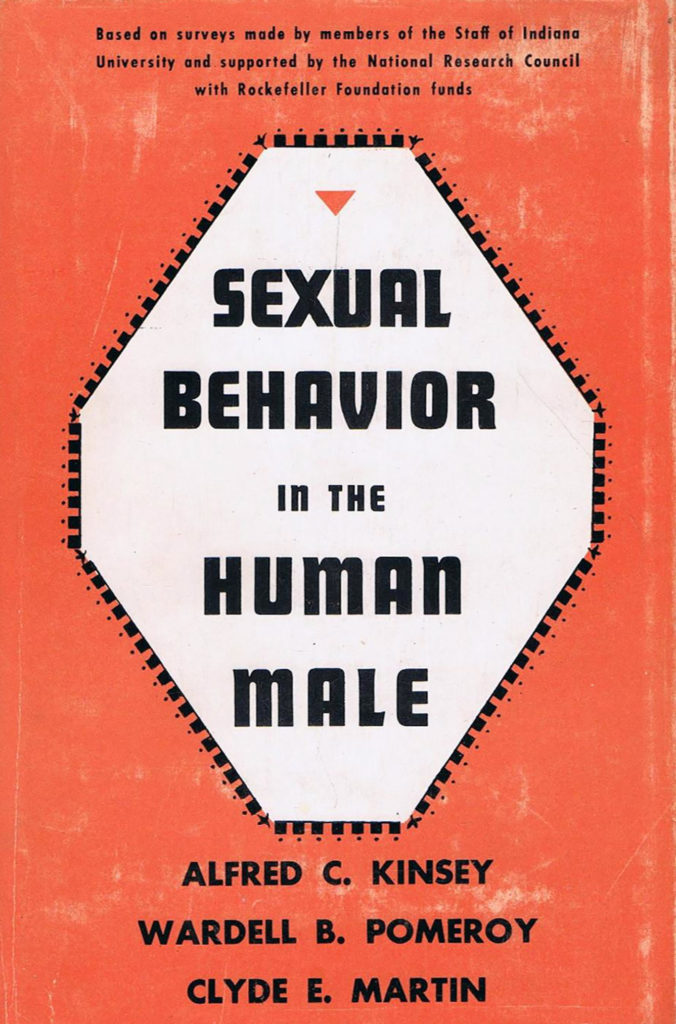
The book’s revolutionary assertion was that sexual diversity was normal. Most famously, Kinsey argued that human sexuality could be mapped onto a continuum from heterosexual to homosexual, rather than fitting only into one of those two simple categories.
As Kinsey and his co-authors explain, “Males do not represent two discrete populations, homosexual and heterosexual. The world is not to be divided into sheep and goats. Not all things are black nor all things white. Only the human mind invents categories to force facts into separate pigeonholes.”Kinsey, Pomeroy, and Martin, 638.
Commercial Success…and Controversy
The eight-hundred-page book was a commercial success, hitting the best-seller list within a few short weeks. This was especially remarkable given that its publisher, W.B. Saunders, was previously known only by the medical community.Brown and Fee, “Alfred C. Kinsey: A Pioneer of Sex Research.”
But the volume ignited the ire of some members of the public. While many praised Kinsey’s findings, comparing the entomologist-turned-sexologist to such groundbreaking intellectuals as Darwin or Marx, others were quite critical of his work.
The head of Catholic University’s Department of Religious Education, Monsignor Maurice Sheehy, called Sexual Behavior in the Human Male “the most anti-religious” book of the time.“Sheehy Attacks Kinsey Report,” Washington Post (November 14, 1948): M19. Op. Cit. R. Marie Griffith, “The Religious Encounters of Alfred C. Kinsey” The Journal of American History Vol. 95, No. 2 (September 2008): 349.Others claimed that Kinsey was giving a carte blanche to sexual deviants, sometimes to a criminal degree, and contributing to a moral crisis among the American public.
RF leaders did not find these attacks alarming. In fact, the critiques were milder and fewer in number than many expected. Trustee James Dickey encapsulated the general RF mood in a letter to RF Trustee and President Elect Chester Barnard in June 1948:
“I have not taken the controversy concerning [the Kinsey Report] very seriously. I have long since accepted the fact that any substantial public consideration of this subject is bound to draw fire, and in so far as I have followed the current reaction I very much agree with you that it is far less than I expected might be the case.”Letter from James S. Dickey to Chester I. Barnard, June 30, 1948. Rockefeller Foundation records, Projects, RG 1.1, Series 200, Rockefeller Archive Center.
Scientific Criticism
More unsettling for a foundation known for working in science, medicine, and public health, however, were the scientific criticisms following the book’s publication. Some psychiatrists complained that Kinsey, who had previously focused on insects, lacked the requisite background to understand the complexity of the human sexuality he studied.
In a 1948 letter to Gregg, psychiatrist Lawrence S. Kubie wrote “… the main defect is that he has not understood the problems of sex deeply enough even to know what the questions are which should be asked in such a study.”Letter from Lawrence S. Kubie to Alan Gregg (June 16, 1948). Rockefeller Foundation records, Record Group 1.1, Series 200, Rockefeller Archive Center.
Then there were methodological critiques of Kinsey’s work, which still persist. Scholars argued that his interview subjects did not come from sufficiently diverse backgrounds. Those willing to be included in the study were most often white and college educated, leaving religious conservatives, working class whites, and African Americans under-represented. In decades since, critics have pointed out that many of Kinsey’s subjects were incarcerated or divulged criminal activities in the course of their interviews. The ethical frameworks of the era regarding human subjects provided little guidance, and thus the Kinsey team did not report the crimes revealed.
Reviewing Kinsey’s Methods
A basic assumption about the data also came under fire. Critics suggested that probability sampling, which uses smaller but more representative samples, would have led to more accurate conclusions. And yet, as a trained zoologist who had studied hundreds of thousands of wasps, Kinsey was steadfast in maintaining that a greater number of subjects would always lead to better conclusions.
The Rockefeller Foundation even sent a team of statisticians to Indiana University to review Kinsey’s methodology. While the team and Kinsey agreed on a number of points, ultimately Kinsey rejected their recommendation that he work with smaller sample groups.
Grant Success, But No Funding Future?
Given the commercial success of Kinsey’s first publication, RF leadership began to question whether the project really needed further grant funds. Writing in his December 1948 officer’s diary, Gregg noted the “rather unusual circumstances” of the project. Never before had a grantee produced a best-seller whose royalties dwarfed the grant that helped produce it in the first place.Excerpt, “Alan Gregg,” Officer Diary (December 17, 1948). Rockefeller Foundation records, RG 12, Rockefeller Archive Center.RF leadership now expected that book royalties would cover future research costs.
Internally, Gregg suggested a gradual decrease in support for National Research Council sex research. When Kinsey heard of these plans, he reached out to Gregg. In a two-page letter, Kinsey outlined thirteen arguments in favor of continued support. The very first one focused on the optics, arguing that “[d]iscontinuation of Rockefeller Foundation support at this juncture of our program will be taken by the population at large as a vote of no confidence in the research.”Letter from Alfred Kinsey to Alan Gregg (April 2, 1949). Rockefeller Foundation records, Record Group 1.1, Series 200, Rockefeller Archive Center.
Support Again Secured (Temporarily)
In May 1949 members of the RF board agreed to continue NRC support for the next three years, provided that Kinsey’s book royalties would also be funneled back into the research. Expressing his approval for the decision, RF trustee Walter W. Stewart wrote to RF president Chester Barnard:
“Personally I have no doubt as to the wisdom and appropriateness of continued support for the work of Dr. Kinsey. Even though some of the publicity attending the publication of his Report may have been unfortunate, the Foundation is not responsible for that. It is not improbable that these studies in the field of sex may come to be regarded as one of the great contributions of Foundation work. As you point out in your letter, work in this taboo area is certain to arouse emotional attitudes. I am glad the Committee did not let this consideration prevent it from granting the additional financial support called for in the resolution.”Letter from Walter W. Stewart to Chester Barnard (June 10, 1948). Rockefeller Foundation records, Record Group 1.1, Series 200, Rockefeller Archive Center.
…work in this taboo area is certain to arouse emotional attitudes.”
Walter W. Stewart, Rockefeller Foundation Trustee, 1949
Kinsey’s Second Book, on the Second Sex
Later, after his research team conducted another several thousand interviews, in 1953 Kinsey published a second volume, Sexual Behavior in the Human Female. This book, which dissected the sex lives of American women, provoked even more interest and outrage from the general public than had the volume on males.
This time, however, the book also became a political weapon on the U.S. House floor.
Published in an era of suspicion and anti-communist hysteria, the Kinsey reports were used against the RF in congressional investigations. Citing Kinsey, one congressional committee accused the RF of helping to weaken American morality, thereby aiding the cause of communism.For more on the Cox and Reece Investigations of private foundations in the early 1950s, see Rockefeller Foundation records, Cox and Reece Investigations, Rockefeller Archive Center.
The End of Rockefeller Foundation -Supported Sex Research
RF funding for sex research projects came to an end in 1954. By then, Alan Gregg had been promoted to vice president, and no longer oversaw (or protected) the grant. Oversight now fell to Warren Weaver, a longtime senior RF staff member who had worked with Gregg for decades and who headed the Foundation’s Division Natural Sciences and Agriculture. Weaver vehemently opposed the Kinsey funding. All in all, the RF reached a point where the controversy surrounding the books had become wearying, and where it decided that Kinsey’s financial success should enable it to cut ties.
While Kinsey’s royalty profits were indeed considerable, he scrambled to find alternative sources of funding for his work and his institute after the RF withdrew its support. Kinsey died in 1956, leaving much of his research unpublished.
What is now known as the Kinsey Institute at Indiana University has since reanalyzed the RF-funded data. Significant new studies have emerged, and methodology has evolved since the pioneering work of the 1940s and 1950s. It goes without saying that the issues Kinsey and his team were exploring continue to prompt scientific, political, and social debates. Nevertheless, many critics and supporters alike still trace the origins of the twentieth-century sexual revolution to Alfred C. Kinsey.
Further Reading
- Leslie J. Harris, “The White Slavery Controversy, Women’s Bodies, and the Making of Public Space in the United States.” Rockefeller Archive Center Research Reports, 2019.
- Eva Payne, “Purifying the World: Americans and International Sexual Reform, 1865-1933.” Rockefeller Archive Center Research Reports, 2017.
- Jennifer Lisa Koslow, “The Pervasive Use of Exhibits for Public Health Education.” Rockefeller Archive Center Research Reports, 2011.
Research This Topic in the Archives
Explore this topic by viewing records, many of which are digitized, through our online archival discovery system.
- “National Research Council – Sex Research – Kinsey,” 1943-1949 April. Rockefeller Foundation records, Projects (Grants), Record Group 1, Subgroup 1.1, United States, Series 200, United States – General (No Program), Subseries 200.GEN, Rockefeller Archive Center.
- “National Research Council – Sex Research – Kinsey,” 1949 May-1954. Rockefeller Foundation records, Projects (Grants), Record Group 1, Subgroup 1.1, United States, Series 200, United States – General (No Program), Subseries 200.GEN, Rockefeller Archive Center.
This story is an expansion of a piece historian Theresa Iacobelli published in 2013 as “Kinsey Reports,” as part of an online exhibit called 100 Years: The Rockefeller Foundation (later retitled The Rockefeller Foundation. A Digital History). The exhibit was migrated to its current home on RE:source in 2022.
